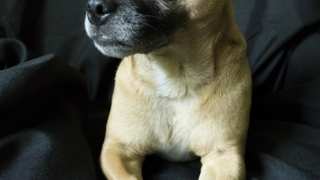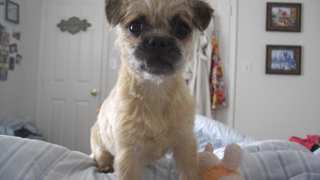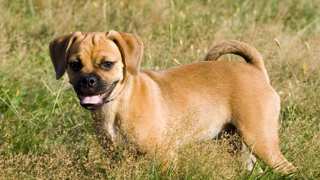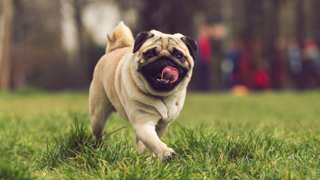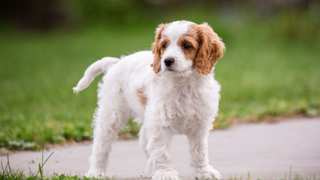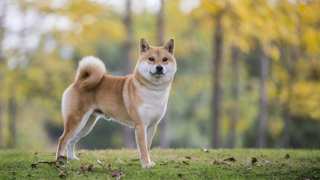The Jug diet will need to include animal proteins, healthy carbs, vitamins, minerals, and omega fatty acids--nutrients every dog needs to help maintain its health in the long term. This means the best Jug food is premium dry kibble, as it has balanced portions of the above-listed ingredients. Cheap, generic food is not recommended for these hybrids, because it contains mostly empty "filler" ingredients that are unhealthy and may even shorten a dog's lifespan.
Jugs do best with premium food that's formulated for small breeds. Royal Canin and Blue Buffalo are recommended brands that carry excellent lines of premium small-breed food.
Adult Jugs, depending on their age, size, metabolism, and activity levels, will need about two cups of dry food per day, divided into two meals. Jug puppies will need a bit less: again depending on age, about 1¼ cups per day, divided into three meals (not two) until five months of age.
For more info on feeding a Jug from puppyhood through maturity, see the following chart:
Dog AgeDog WeightFood TypeAmountFrequency2 Months3 lbsDry (Puppy formula)6-8 pieces3x/day3 Months5 lbsDry0.25 cups3x/day5 Months10 lbsDry0.4 cups3x/day8 Months13 lbsDry* (Puppy/Adult)0.75 cups2x/day10 Months+15 lbsDry (Adult formula)1 cup2x/day*--Around this time, transition to adult food by mixing in adult formula with the puppy formula, in slowly increasing amounts with each meal, for one week.
Try if possible to stick to the above-listed portions. If these hybrids are constantly overfed (and under-exercised), they will quickly become overweight--and a fat Jug will have joint, breathing, and digestive problems and a potentially shortened lifespan. You can help control your Jug's weight by having consistent feeding and exercise schedules, by not feeding the dog table scraps, and by not leaving food in the dog's bowl all the time.
If you're worried your Jug is overweight, give the dog this simple test: run a hand along its side, and if you can't feel any ribs, it's diet time--which means less food and more exercise!

